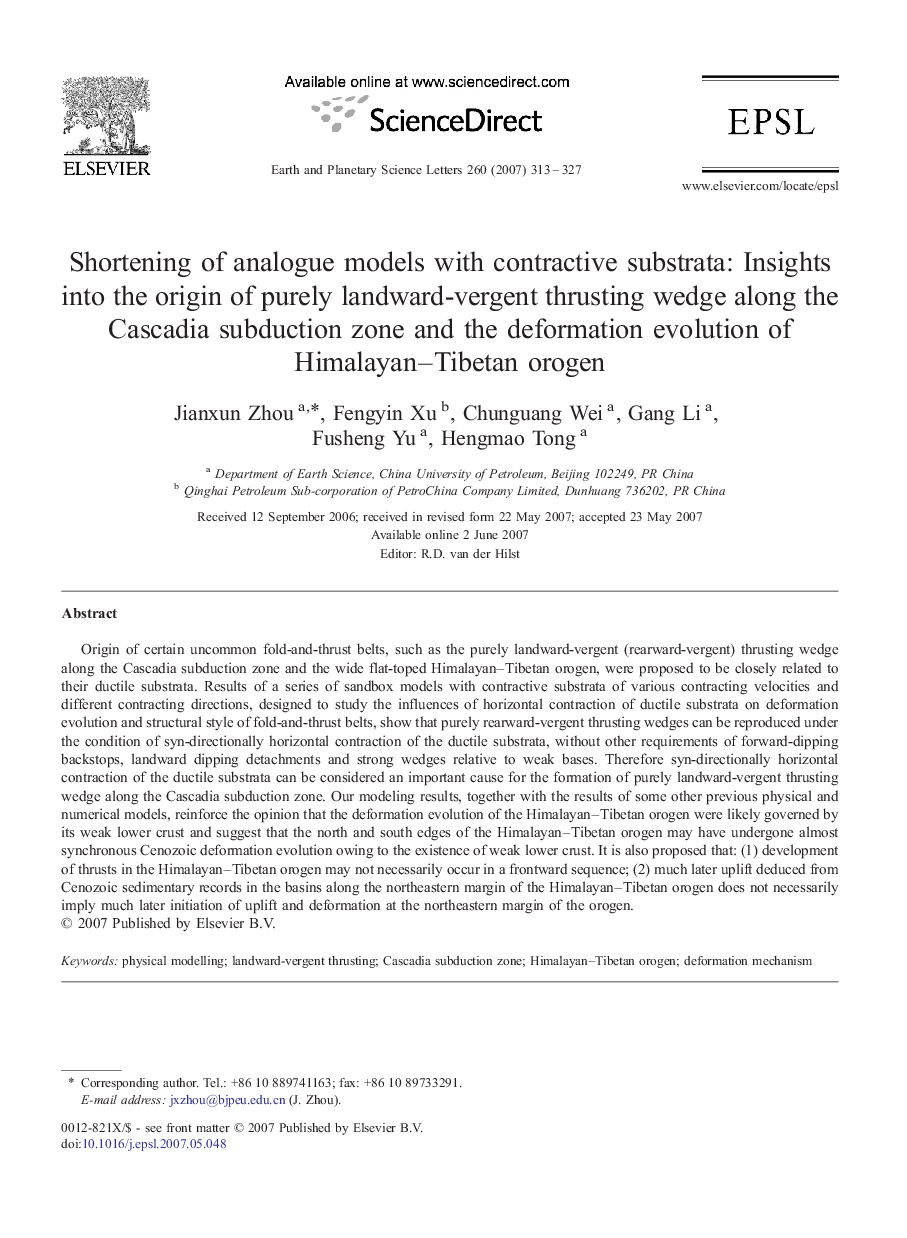| کد مقاله | کد نشریه | سال انتشار | مقاله انگلیسی | نسخه تمام متن |
|---|---|---|---|---|
| 4680268 | 1634915 | 2007 | 15 صفحه PDF | دانلود رایگان |

Origin of certain uncommon fold-and-thrust belts, such as the purely landward-vergent (rearward-vergent) thrusting wedge along the Cascadia subduction zone and the wide flat-toped Himalayan–Tibetan orogen, were proposed to be closely related to their ductile substrata. Results of a series of sandbox models with contractive substrata of various contracting velocities and different contracting directions, designed to study the influences of horizontal contraction of ductile substrata on deformation evolution and structural style of fold-and-thrust belts, show that purely rearward-vergent thrusting wedges can be reproduced under the condition of syn-directionally horizontal contraction of the ductile substrata, without other requirements of forward-dipping backstops, landward dipping detachments and strong wedges relative to weak bases. Therefore syn-directionally horizontal contraction of the ductile substrata can be considered an important cause for the formation of purely landward-vergent thrusting wedge along the Cascadia subduction zone. Our modeling results, together with the results of some other previous physical and numerical models, reinforce the opinion that the deformation evolution of the Himalayan–Tibetan orogen were likely governed by its weak lower crust and suggest that the north and south edges of the Himalayan–Tibetan orogen may have undergone almost synchronous Cenozoic deformation evolution owing to the existence of weak lower crust. It is also proposed that: (1) development of thrusts in the Himalayan–Tibetan orogen may not necessarily occur in a frontward sequence; (2) much later uplift deduced from Cenozoic sedimentary records in the basins along the northeastern margin of the Himalayan–Tibetan orogen does not necessarily imply much later initiation of uplift and deformation at the northeastern margin of the orogen.
Journal: Earth and Planetary Science Letters - Volume 260, Issues 1–2, 15 August 2007, Pages 313–327